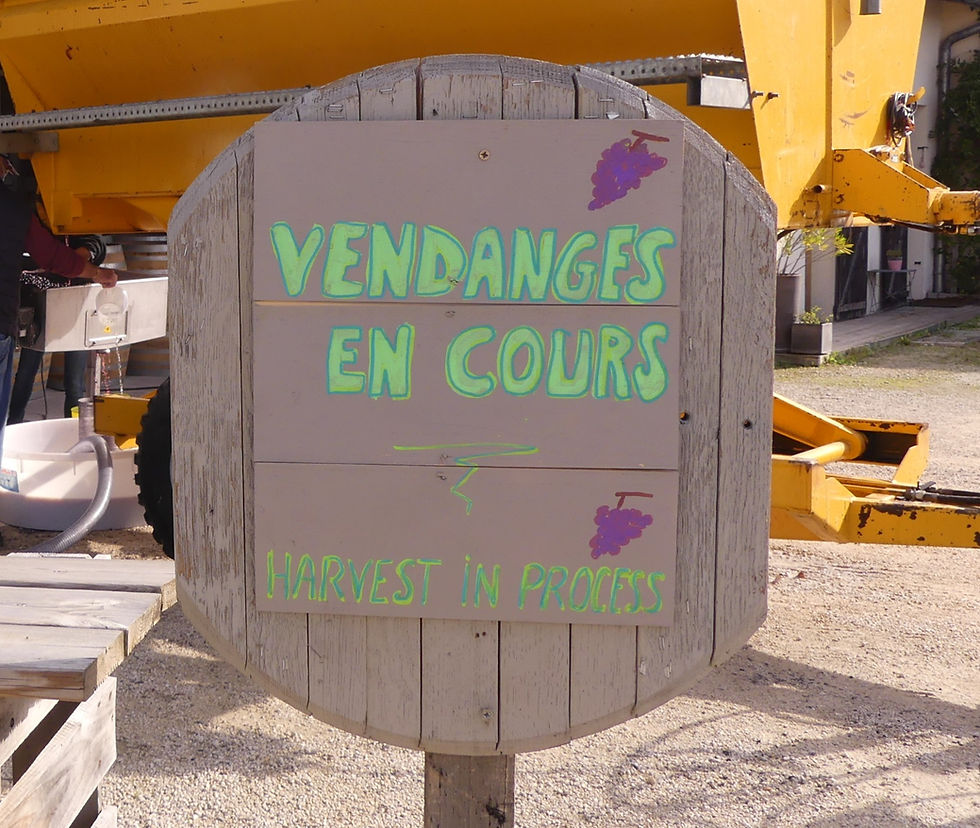The 2020 harvest is over! On the way to fermentation...
- mnm&mm

- Nov 15, 2020
- 2 min read

That's it, our grapes have been harvested, phew! we managed to pass between the drops.
A beautiful window opened to launch the 2020 harvest. Given the cumbersome protocols to be put in place because of COVID and especially to take advantage of this very small window of good weather we decided to harvest by mechanically. This "little jewel" of technology, with artificial intelligence, cameras, on-board sorting... allows us to adapt a multitude of settings to harvest, while preserving the quality of the grapes and keeping the berries intact.
The grapes are then brought back to the chais and it is on the sorting table that the whole team finishes the work.
They remove the remaining stalks and leaves and some of the inhabitants of our lost vines. This year we had a race of snails, earwigs and various caterpillars and ladybugs. A phasme and a small tree frog also came to visit us.
Half of our berries go directly into barrels for alcoholic fermentation, the other half into vats.
We check the density and temperature of the grapes and the juice before closing the barrel to estimate the degree of alcohol, but also to avoid letting the temperatures get out of control and thus manage the future fermentations. Once the barrel is full, a stainless-steel plate is screwed on to close it; then it is rolled up until it reaches its work colleagues.

The alcoholic fermentation can then begin. This 1st stage of the winemaking process corresponds to the natural transformation of the sugars of the fruit into alcohol.
It is done spontaneously, without the addition of any yeast, only the natives naturally present in our grapes do the work. As the juice escapes from the berries, in the vats, as in the barrels, all the solid matter rises to the surface to form the pomace, or cap, composed of skins, pips, and a few stalks left more or less voluntarily (they allow easier penetration of the juice into the cap). This pomace continues to bring color, tannins, aromatic compounds and everything that has not yet been offered to the juices by the skins and seeds. During the alcoholic fermentation, we homogenize all volumes, each vat, each barrel, so that each berry offers all its aromas, color, tannins ... that it has in it. For the vats, we pump over the juice we release from the bottom of the vats. A pump allows us to pour the juice over the top of the cap. As for the barrels, they are rolled from a day position to a night position (and vice versa), without any external aggression, no valve, no pump, no pipe, for more softness and delicacy. The fruit is enhanced, thus optimizing the structure, depth and intensity of the wine. To be followed... for 8-15 days!

A new experience, this year, during the alcoholic fermentation of our 2020 vintage: some barrels are equipped with aseptic siphoid bungs. A gift from our children!
Quesaco? A bung equipped with a transparent siphon that keeps the wine out of the air, while allowing carbon dioxide to escape. You can therefore see immediately if the barrel is still fermenting and when it is finished, and above all, there is no risk of oxidation.
To be continued: when malic turns into lactic?!






















My experience with Noida Escorts was absolutely fantastic. From the start, the communication was smooth, and the girl I met was even better than expected. She was classy, friendly, and very attentive throughout. The evening was full of laughter, fun, and relaxation. This service is truly perfect for anyone seeking genuine companionship in Noida.
Noida Escorts|| Noida Escort|| Escorts in Noida|| Escort in Noida|| Noida Escorts Service||